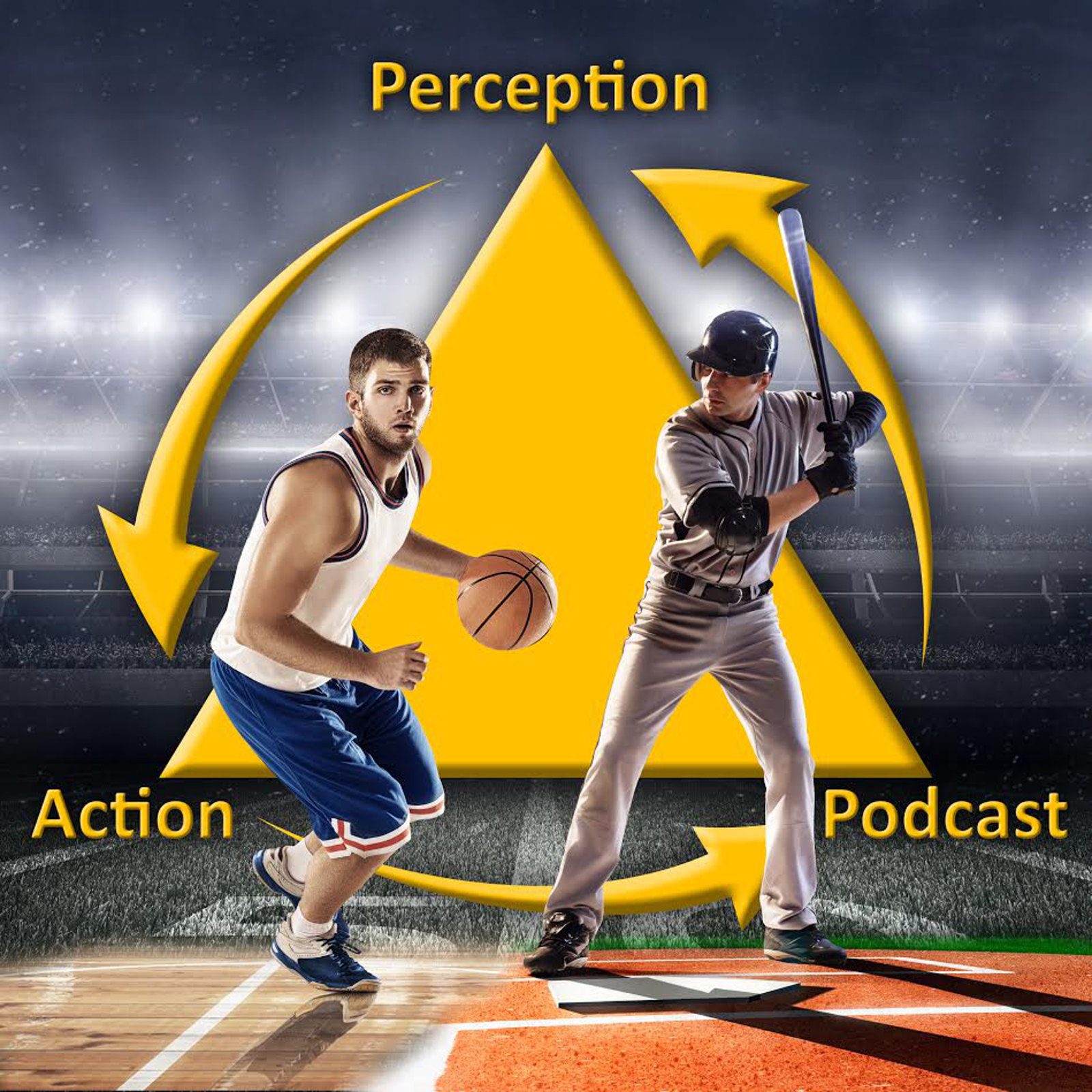3
What should an athlete look at when performing their sport? For example, should a soccer goalkeeper keep their eye on the shooter’s leg when trying to stop a penalty kick or on their upper body? Should a golfer look at the ball or the hole when putting? Do expert athletes look at different things than novices? Is it really possible to always keep your eye on the ball? In this episode, I examine the role of eye movements in sports.
Research Confessions: My first batting simulator experiment and the importance of keeping conditions in an experiment the same
Download link
Key points
• Only the small area right in the center of where you are looking is seen in clear, high resolution. The rest of the scene, in our peripheral vision, is blurry, low resolution. Therefore, we need to move our eyes around a lot!
• The way in which we move from fixation to fixation depends on what we are doing and is called our visual search strategy.
• Several studies have shown differences between the visual search strategies of expert and novices athletes. For example, in 2002 Savelsbergh and colleagues found that expert soccer goalkeepers employed a more efficient search strategy involving fewer fixations of longer duration to a very small number of locations on the shooter’s body while novices look all over.
• The general finding we see across a lot of sports is that experts fixate their eyes on a smaller number of key areas for a longer duration, while novices frantically move their eyes almost everywhere.
• In some cases, it seems like the purpose of fixating on a location is not to use central vision but rather to anchor the eyes so that the important peripheral cues can be seen
• Just before they begin moving, skilled athletes seem to lock their eyes on one thing in their environment (for example the ball when putting, or the hoop in basketball) and keep it there. The lack of movement of the eyes during this period is reflected in the it’s name (the Quiet Eye period) coined by Joan Vickers. This effect has been demonstrated in sports including ice hockey, archery, shooting, billiards and tennis.
• It has been proposed that a long fixation on the target is required to organize and plan the movement parameters.
• Early research on following a moving object (like a pitched baseball) with your eyes is impossible to do for its entire flight because object moves faster than we can move our eyes.
• Instead, in many cases, elite athletes seem to follow the ball for a while then make a quick jump of their eyes (called a saccade) to where they predict it will be
• More recently it has been shown that truly elite batters coupled the rotation of their head to the movement of the ball, ensuring the ball remained in a consistent direction relative to their head
• Research has shown that training people to have a longer QE period can result in improvements in skilled performance
• Effective control of eye movements (which is an aspect of visual software) does seem to be a crucial factor in sports with research convincingly demonstrating it as a factor that distinguishes athletes of different abilities and can be training to improve sports performance.
• A crucial feature of this research is that the athletes are usually studied in context, that using stimuli they encounter in their sport rather than eye charts or flashing lights
Articles:
- Visual search, anticipation and expertise in soccer goalkeepers
- Anticipation and visual search behaviour in expert soccer goalkeepers
- Visual search strategies of baseball batters: eye movements during the preparatory phase of batting
- The role of central and peripheral vision in expert decision making
- Gaze control in putting
- Quiet eye duration, expertise, and task complexity in near and far aiming tasks
- The “quiet eye” and motor performance: task demands matter!
- Visual Movements of Batters
- Why can’t batters keep their eyes on the ball?
- From eye movements to actions: how batsmen hit the ball
- The Head Tracks and Gaze Predicts: How the World’s Best Batters Hit a Ball
- Quiet Eye Training Facilitates Competitive Putting Performance in Elite Golfers
More information:
My Research Gate Page (pdfs of my articles)
My ASU Web page
Podcast Facebook page (videos, pics, etc)
Twitter: @Shakeywaits
Email: robgray@asu.edu
Credits:
The Flamin’ Groovies – Shake Some Action
Still Pluto – Open Up Your Eyes
Two Prong – Search Your Eyes
The Rusty Bells – Drop Your Eyes
Justin Townes Earle – Mama’s Eyes
Farmertan – Ugly Truth
via freemusicarchive.org
